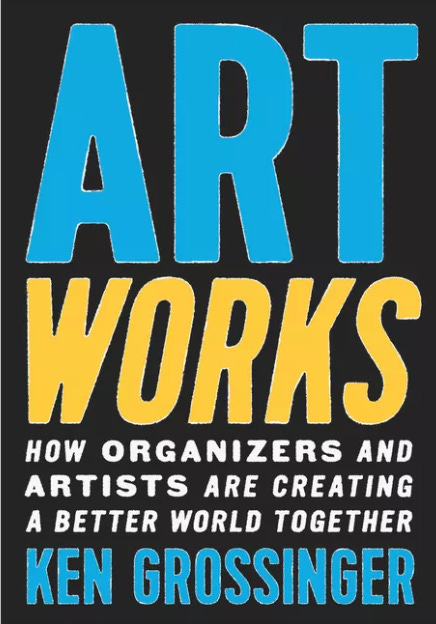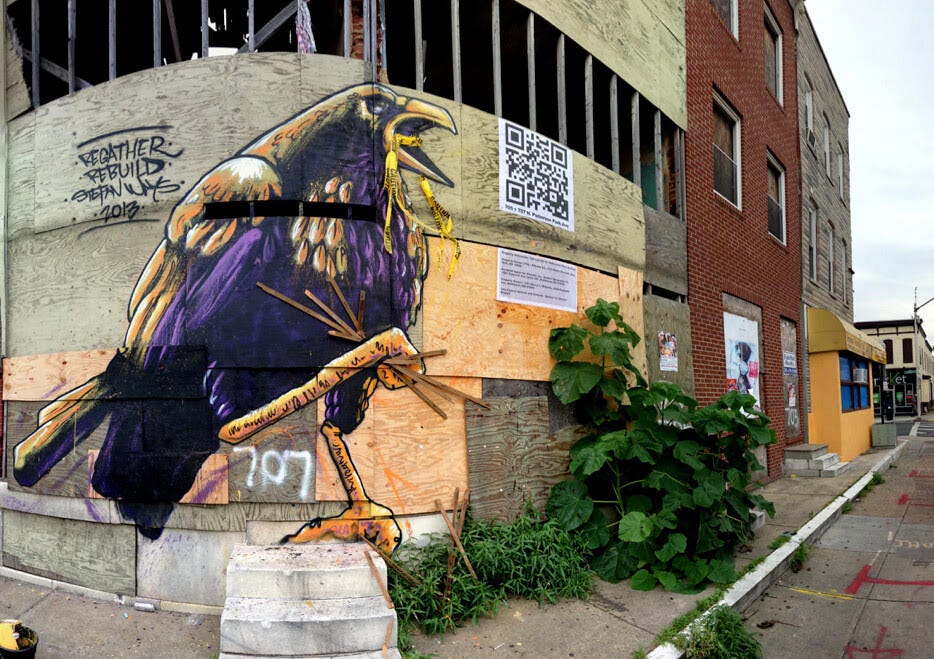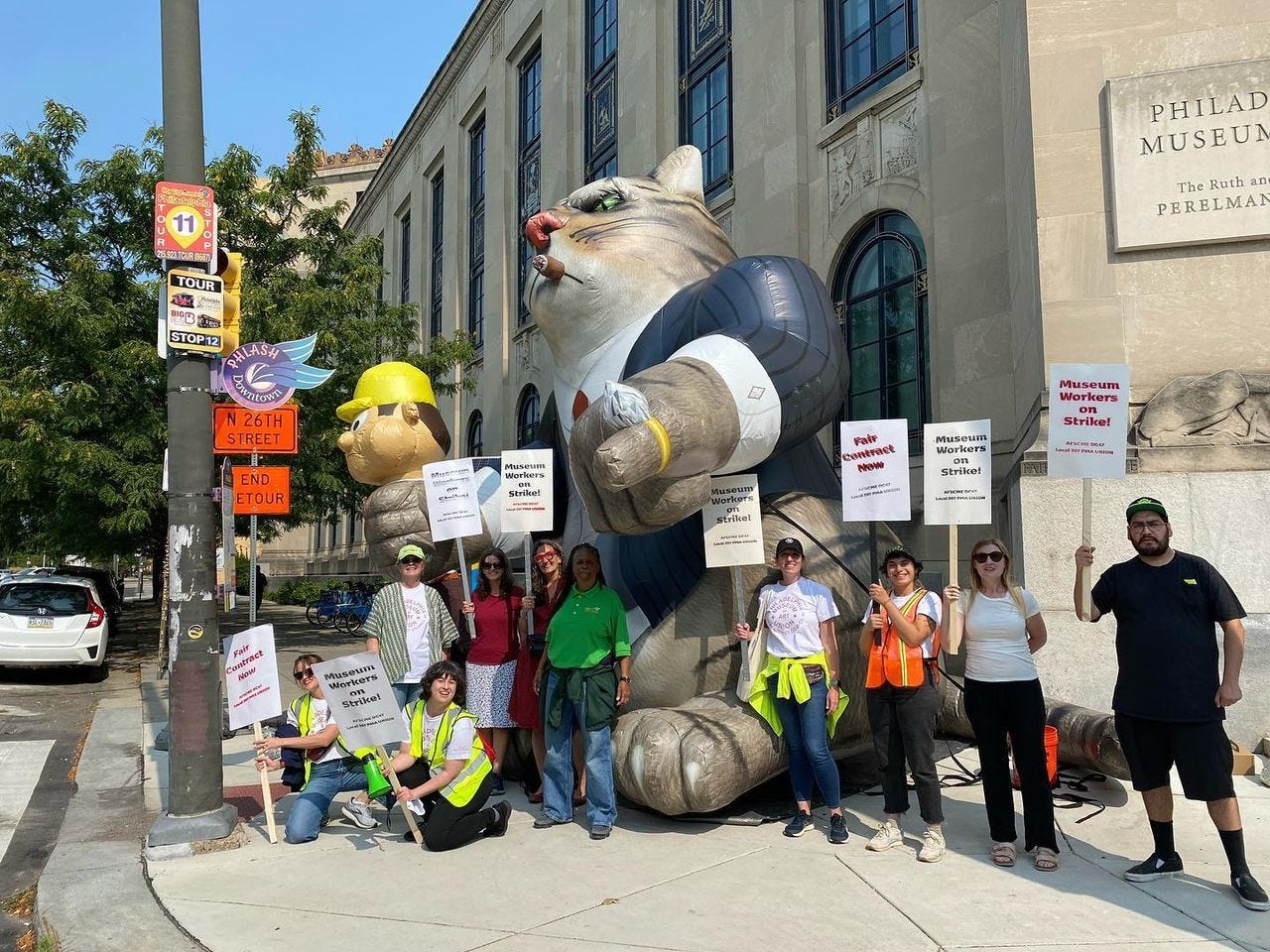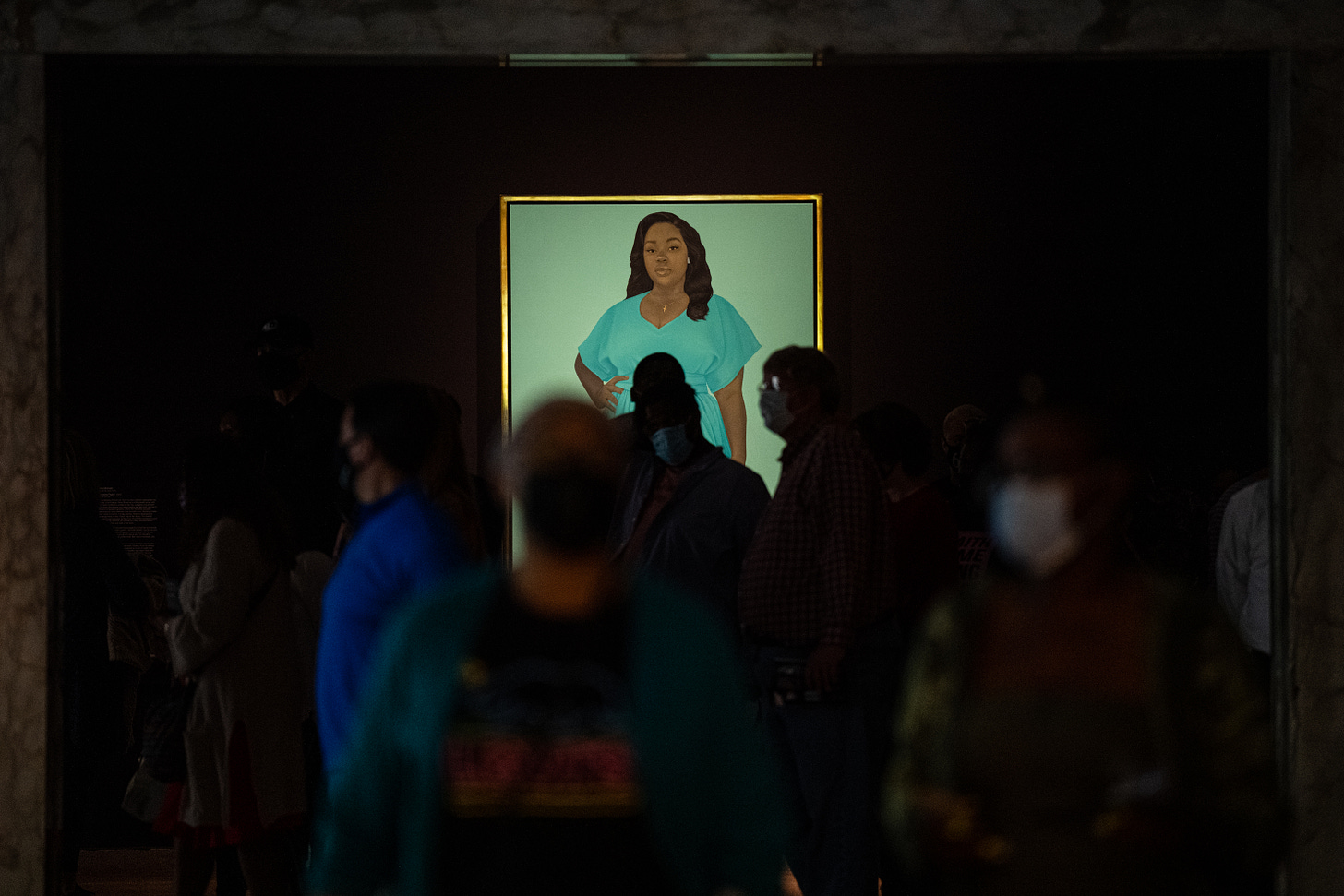Art Works: A Conversation with Ken Grossinger
Part One of a conversation about How Organizers And Artists Are Creating A Better World Together

I am really pleased to have this opportunity to exchange ideas with you, Ken, about the relationship between artists and political action, thank you for this. Before I get to specific questions, some of which I confess to not having answers to myself, I want to provide what I hope is a bit of relevant personal context about being educated as an artist in the contemporary world because I suspect that many of the visual arts faculty who will want to use your book ART WORKS in the classroom are, like me, will be able to relate to my own story. What I most want to underscore, is that most BFA, MFA (or in Europe PhD) programs not only teach various skills, technical or managerial, but also a certain attitude, or mindset, about the artist’s relationship, or lack of relationship, with broader society.
This tendency has typically had two broad forms: either the artist turns away from society by sequestering themselves in their studio, or they seek to confront, subvert, or challenge the “status quo” with their art. Sometimes this second tendency is an expression of anger or outrage. Sometimes, as with my circle of instructors and comrades in the 1980s, it pivots on an analysis of the system as a means of illuminating its problems (think of Lucy R. Lippard, Hans Haacke, Martha Rosler, Carrie Mae Weems, or Rasheed Araeen). Still, in all these instances, whether we speak of the angry artist or the analytical artist as critic, we constantly place ourselves off-stage, as if we remain outsiders looking into society (and I note this is more evident in the visual arts, than it is with, say, Boal’s Theater of the Oppressed approach). A separate branch of this latter, more conceptual tendency has lately tried to bridge the gap between artist and society, including Rick Lowe, Suzanne Lacy, or recent projects by Dread Scott for instance, and I believe this effort at overcoming the artist’s isolation is where your book focuses its attention most sharply. Nevertheless, doesn’t the angry protest artist who lacks what you call a “political infrastructure,” sometimes wind-up reinforcing the artist-as-exception bubble, rather than bursting it?
Ken Grossinger (KG): Greg, thank you for sharing this background. As you know, some activist-artists and educators dismiss any coordinated connection between their work and campaigns for a more just society. They express themselves on their own terms and in their own time without engaging in collective action for social change. I agree with you that this can reinforce what you’re calling an “artist-as exception” way of thinking.
That said, understanding their approach to art and activism is key to eliminating the obstacles to new forms of collaboration among artists, community, and labor organizers. Art Works looks at the artist/organizer collaborations that made social movements possible, from Civil rights and BLM movements to environmental and immigrant justice. Further it looks at institutions including foundations and museums to explore their role in supporting or disrupting strategies for social change.
While individual forms of political expression can make important contributions to change, collaboration and alliances across many sectors can strengthen our capacity to win. Addressing the mindset you’ve just described is key to understanding what might be possible and to harnessing our potential power.
GS: What advantages, but also perhaps what disadvantages, exist for artists who work “without a political infrastructure,” by which I think you mean operating from a non-aligned and independent position?
KG: The downsides to working without a political infrastructure are significant. Organizations have resources that artists often don’t. They have mailing lists, organizers and sometimes communication and digital strategists on staff, philanthropic support - that is harder for individual artists to achieve - and more.
The absence of these basic resources that are necessary (though not sufficient) for change further constrains the capacity of the left to win because it is no match for powerful industries and government that want to maintain things the way they are.
Challenging power requires collective action. Rarely, can individuals muster the resources to contest for power, no matter what sector they come from. Many artists understand this, and that understanding is in conflict with the artist as exception paradigm. The two things live side by side.
Without infrastructure artists are left to their own devices, forced to fend for themselves. Who besides the artists themselves is looking out for their basic needs, from studio space to putting bread on their table. It’s difficult enough for organizations that have some political clout to influence policy but without their proactive support, and a popular mobilization that forces change, how will artists achieve protections and basic worker rights?
We’re seeing the answer to this question play out right now with the new organizing reflected in the Writers Guild and SAG AFTRA strikes. These artists, screenwriters, actors, and others are collaborating with community and labor organizations, to their mutual benefit
We’re also seeing a surge in the number of museum staff who are unionizing for protection and better compensation. They are joining a wide range of unions, from the Auto workers who represent 15 plus major cultural institutions including MOMA and the Whitney, to the American Federation of State County and Municipal Employees, (AFSCME) to Steelworkers and Machinist unions. These organizing drives are sometimes catalytic, sparking others to do the same. Organized cultural workers are slowly emerging as an important voice for progress.
You also ask if there is an “upside” for artists who work completely independent of organizations. The truth is that many artists feel less constrained working solo. Organizations often bring a poll tested messaging approach to their work and this, along with organizational culture can stifle their creative impulses. The pressure from advocate organizations on artists to work in a way they believe will maximize conventional organizing may unintentionally marginalize artists, diminishing the very quality and strengths they bring to the strategy tables; out of the box thinking and their artistic skills.
Organizing metrics are also more quantitative then qualitative and that can cause a rub among artists and organizers. Community organizers want change yesterday, and many artists like Hank Willis Thomas, think change happens on a 10–40-year horizon. That’s because narrative change is not an overnight campaign, but a long-lasting initiative which art could propel.
It takes trust, common interest, and a commitment to change to offset an “outsider” approach to community. Artists, community and labor organizations, and funders can mitigate the risk and reduce the obstacles I just described by establishing upfront agreements on the terms and scope of collaboration. When we’ve got that, we can succeed.
GS: Or is it that these artists’ politics are already presumably “progressive”? Is that necessarily a wise assumption from a politically effective position?
KG: Like many, I believe artists fall more toward the middle and left than the right. But there is no doubt that the right understands the power of art and capitalizes on it. Whether we are looking historically at the film Birth of the Nation, which helped double the size of the KKK at the turn of the 20th century, the role the CIA played on the MOMA board during the cold war to advance abstract expressionism as a counter to soviet social realism, or more recently, the song Rich Men North of Richmond which FOX news used to open the first 2024 Republican primary debate. The right gets it. Many of their change-agents deeply understand the importance of culture to advance their interests.
GS: Does working for change also involve overcoming the type of “training in social alienation,” that I refer to above? And if so, how do we convey this problem, but also try to overcome it in the classroom context?
KG: Not all artists need to grapple with social alienation, but for activists who want to use art as an accelerant for protest and/or to shift dominant narratives that oppress, it’s critical. That said, formal training (as you know) isn’t a prerequisite for artist/ organizer collaborations. Alliances are often created organically, on the streets, in meetings and discussions. We need look no further than BLM to understand and document that.
In a classroom context, I would just say, looking in from outside of the Academy, that it is useful to bring into the classroom people who are doing the work by engaging their communities. Artists and organizers who work at the intersection of art and social justice will discuss their work in classrooms, and teachers can (and do) facilitate dialogue between them and their students, focusing on, among other things, how they think about the artist as exception notion, to the extent that they do. If you’re an artist-activist interested in change, one question for classroom debate is under what conditions it is possible to reconcile an outsider stance with the value of collaboration. These conversations can also inspire students to become organizers, artists---or both
When classroom work is deeply embedded in community, whether that is the art and organizing world writ large, or in Queens, NY, the possibilities for developing new forms of collaboration are particularly salient. Describing the relationship between social change and his art, Rapper Jasiri X notes in Art Works that “My art and music are connected to the work I do every day. It has the most power when it is rooted in movements. When creating art is rooted in community, it becomes art for social change.”
GS: As important as battling injustice has become for younger artists, if the deeper political economy of culture and society is not also challenged, are we not in danger of merely forming a kind of “loyal opposition” within global capitalism? A danger that is made all the more likely in the absence of “political infrastructure.”
KG: Yes, and we do need a loyal opposition. But as you suggest, that is not sufficient to disrupt systems to create space for change. For that to happen, building alliances with other sectors is crucial….
PART TWO OF MY CONVERSATION WITH KEN GROSSINGER WILL BE PUBLISHED IN THE PREMIER ISSUE OF Left Art Review (before end of year).






